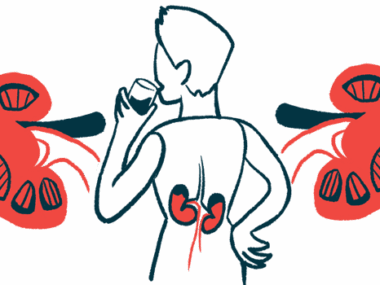Tekturna Seen to Treat High Blood Pressure Associated with aHUS
Written by |

A medication for high blood pressure, Tekturna (aliskiren) may be used as an add-on therapy to manage hypertension associated with atypical hemolytic uremic syndrome (aHUS) until more adequate treatments become available, a case report finds.
The study, “Aliskiren as an adjunct therapy for atypical hemolytic uremic syndrome,” was published in the Clinical Kidney Journal.
Atypical hemolytic uremic syndrome is a rare disorder caused by the progressive destruction of red blood cells due to the dysregulation of the complement system — a set of more than 20 blood proteins that form part of the body’s immune defenses. Damaged red blood cells may then start to aggregate and form blood clots that clog the small blood vessels of various organs, including the kidneys. High blood pressure (hypertension) as well as organ damage results.
Recent studies suggest that direct renin inhibitors (DRIs) — medications that block the activity of the enzyme renin, widening blood vessels and lowering blood pressure — may also prevent the activation of the complement system associated with aHUS by blocking the cleavage of the C5 complement protein.
Physicians at the Walter Reed National Military Medical Center in the U.S. described treating a patient, later found to have aHUS as well as extremely high blood pressure. His symptoms improved significantly upon treatment with Tekturna, the first oral DRI approved for hypertension.
The 21-year-old man was an active duty Army soldier with no history of hypertension or kidney disease. He was transferred to the hospital with acute kidney injury requiring renal replacement therapy (some form of dialysis). He also had extremely high blood pressure (250/140 mmHg; normal range is 120/80 to 140/90 mmHg), despite taking five different anti-hypertensive medications at maximum doses.
Bloodwork showed he had anemia, low platelet counts (thrombocytopenia), low levels of haptoglobin (an indicator of red blood cell destruction), and high levels of lactate dehydrogenase (an indicator of tissue damage).
A kidney biopsy found signs of thrombotic microangiopathy (TMA), a condition in which the small blood vessels found inside the kidneys become clogged, ultimately leading to kidney failure.
These findings prompted the diagnosis of aHUS, and he was started on Soliris (eculizumab), a complement inhibitor developed and marketed by Alexion that is currently the first-line treatment for aHUS. At the same time, he started treatment with Tekturna, and his blood pressure dropped immediately (160/90 mmHg), even after weaning from the intravenous anti-hypertensive medication he was then being given.
After five months of treatment, while waiting for a kidney transplant, his blood pressure continued to improve, as did his blood levels of hemoglobin and C3 complement protein. However, his kidneys were not showing improvements.
“Since he remained on five maximum-dose anti-hypertensive medications and his C3 level remained low, [Tekturna] was increased to 300 mg twice daily. With this change he was able to transition to four anti-hypertensive medications at reduced doses,” the researchers wrote.
The patient gradually regain more energy and appetite, and started sleeping better. Additional tests found no genetic abnormalities or the presence of inhibitory antibodies of the complement system in his bloodstream.
He remained stable for four months while on Soliris and high doses of Tekturna. His kidney function did not improve until his transplant, which was successful. He has since continued treatment with Soliris and Tekturna, and shows no signs of aHUS.
“Our case report supports the use of a renin inhibitor for aHUS with malignant hypertension using higher doses of [Tekturna] until there are alternative options with higher bioavailability [the rate and extent of a medicine reaching its site of action],” the researchers concluded.





